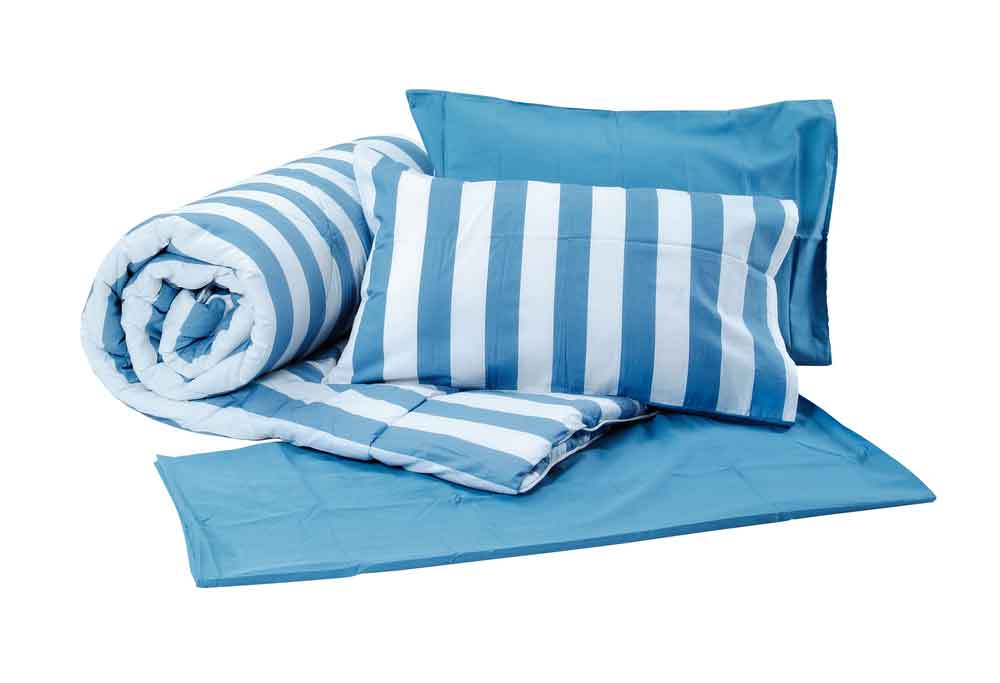How to Store Blankets and Pillows
Many Americans have this notion that preparing your pillows and blankets for storage over an extended period is a piece of cake. Well, think again. There's undoubtedly a lot more to it than merely shoving them inside your storage unit.
Using the right preparation methods and supplies will help in doing this task correctly. This is because the things we use for our bed need special care for us to maintain its pristine condition even when stored.

Methods and Materials for Pillow and Blanket Storage
It doesn't matter whether you're shutting your vacation home for this season, downsizing, or just arranging your closets. You always have to pick the right materials and methods that will suit your needs and your budget efficiently.
Cardboard Moving Boxes
Using cardboard boxes for storage is the least costly option. However, this may not give your bedding the same amount of protection compared to the other techniques for storage.
To give your beddings more protection, you can line these boxes up with sturdy garbage or lawn bags. Also, you have to ensure that you use or buy extra-large boxes so your beddings will have enough space.
When you place your pillows and blankets inside the thick plastic bags, try to press it to get the air out. Push as much as possible so your beddings would get compressed enough. Then, seal it using a twist tie.
Plastic Lidded Bins
These lidded bins are easy to find. There are also various sizes you can choose from. Plastic lidded containers are best suited for keeping blankets made out of synthetic fibers as well as pillows filled with polyester.
These plastic bins will protect your pillow and blanket from allergens and keep them clean as well. There are also specially designed bins so you can keep them under your bed. If you're storing bedding that you want to easily reach when needed, this is a good option for you.
Conversely, if you're going to store bulky pillows and blankets in your attic, basement, or perhaps a storage unit that you rented, find larger lidded bins.
Cedar Chest
A cedar-lined wooden chest is an ideal method for adequately storing pillows and blankets. This is because the oil from cedar wood repels insects and moths naturally. If you're planning on storing bedding made from natural fiber, this is an excellent option for you.
Keep this in mind, though. You have to maintain the cedar chest regularly so it won't lose its efficacy. Before placing your pillows and blankets inside, you have to gently sand the chest's interior to restore its scent and stimulate the oils of the wood.
Vacuum Bags
If you don't have much space for storing your pillows and blankets, or you're not just a fan of bulky bins and boxes, make use of vacuum bags.
If your vacuum has an attachment for a hose, you can use durable nylon and polyester bags to create airtight storage for your bedding. These airtight bags will protect your pillows and blankets from odors, mildew, insects, and dirt.
You just have to fold your pillows and blankets neatly and then place them in the bag. Then, zip up the bag's closure and attach your vacuum's hose to the valve. Next, switch on your vacuum to get rid of the air inside the bag. Lastly, seal the valve by placing the cap on.
If you don't have these particular bags available, though, you can always compose your own vacuum bags by making use of durable plastic garbage bags.
Just put your neatly folded pillows and blankets inside, and then hold the bag's opening in one hand. Use your vacuum to take out all the air and make sure that your bedding inside is thoroughly compressed. Then, seal it by tying a knot or using packing tape.
Important Storage Tips
Before you store your bed items, make sure that you clean them first either by dry cleaning or washing them. Not doing so might damage or discolor the cloth fibers of your bedding. Remember, substances like your body oil might be seemingly harmless but could still cause damage to your bedding's material.
Also, when you wash your pillows and blankets before storing them, they'll be fresh and suitable for immediate use after you take them out of storage.
Before storage, another essential thing to do is to put your filled pillows and blankets inside a breathable cotton bag. You can also roll them up in a large sheet. Utilize the bag that came with the manufacturer or buy canvas carriers of the right size.
If you're using vacuum bags for storage, don't keep your bedding in there for long periods. This is because when you keep your bedding compressed for a long time, it can damage its fragile down clusters. Thus, its capabilities for insulating will not be as efficient anymore.
Also, you have to find a storage environment that is relatively dry to keep your bedding away from mildew. If you ever have to store your items in damp places, put them on a sheet of plastic or a stand-alone rack.
Lastly, make sure that your washed pillows and blankets are entirely dried up before packing them for storage.
Conclusion
Choosing the best storage unit for your bed items is essential in keeping your pillows and blankets safe from elements while they're in storage. Keep the tips above in mind so it can help you pick the best option to store your bed items.
Also, make sure to reinforce the simple checklist we've laid out above to keep your pillows and blankets safe from dust, mildew, insects, or other elements. This way, when it's finally time to get them out of storage and use them, you won't have any potential headaches.